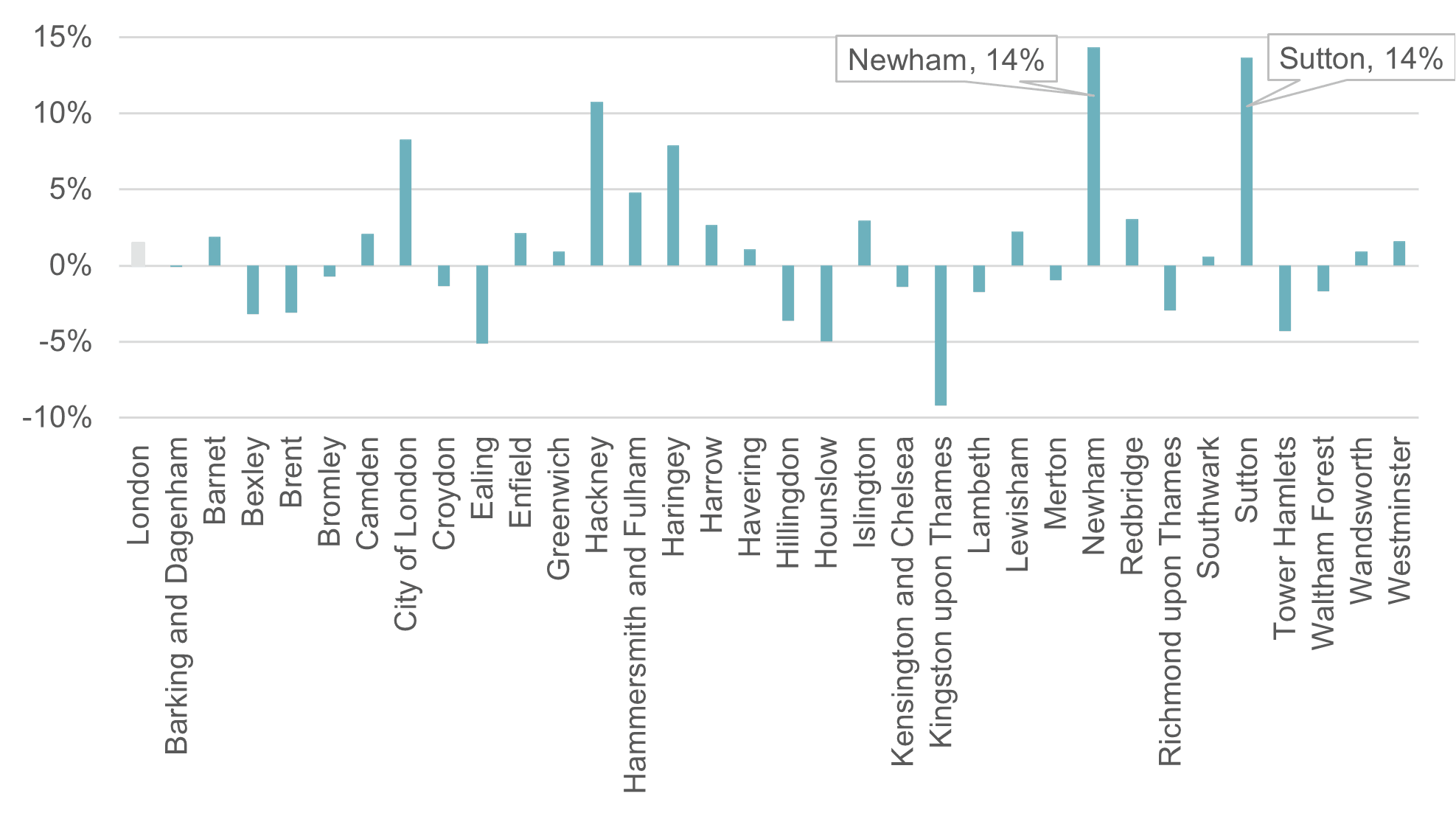The Office for National Statistics (ONS) released the nation’s most highly anticipated provisional estimates for employment in October, the Business Register and Employment Survey (BRES). With 85,000 businesses surveyed in Great Britain and a response rate of 69.5%, BRES is regarded as the go to source for employment statistics. This latest release provides us with a good estimate to see the newest trends a year after the COVID-19 outbreak in Great Britain.
Over the past decade, employment has increased in all of Great Britain’s regions. However, employment declined across the nation by -1.8% from 2019 – 2020 as various businesses were forced to close or reduce operation following the COVID-19 outbreak. The lifting of restrictions helped fuel a recovery in employment numbers across Great Britain, with a 2.8% increase from 2020 – 2021. However, it is noticeable that some regions did not follow this trend:
- Wales showed no significant change in total employment from 2019 – 2021. Employment dropped only -0.04% from 2019 – 2020 (compared to a -1.8% drop in Great Britain), and only increased by 0.3% from 2020 – 2021 (compared to a 2.8% increase in Great Britain);
- The East of England did not experience a significant slump in employment during 2020 (declining by only -0.1%); and
- The North East, North West and London were the regions with the highest increase in employment from 2020 – 2021, increasing by 4.4%, 4.2% and 3.5% respectively.
Figure 1: Change in employment for Great Britain, East, Wales, North East, North West, London and other regions (2012=100)
This begs the question of what sectors drove this recovery in employment. BRES can provide this insight. Employment in both the public sector and health sector increased by 6.4% and 5.4% respectively from 2019 – 2021 and showed no drop in employment throughout this period. This was largely due to a rise in hospital staff alongside others needed to support in the fight against COVID-19 such as track and trace employees. Other sectors saw a steep decline from 2019 – 2020, such as the leisure and hospitality sector (-7.9%). This drop, largely due to the halt of high-street retail during various lockdowns, was much greater than the average decline across Great Britain (-1.8%). Employment in leisure and hospitality did bounce back in 2021, increasing by 5.9%, but remains below the employment supported in the sector pre COVID-19.
Figure 2: Changes per sector in Great Britain (2012=100)
London focus
Much like how Great Britain’s regions don’t all follow the national trend, local authorities don’t all follow the trend of their regions. For instance, London saw positive employment growth of 1.5% from 2019 – 2021, despite suffering a decline of -1.9% from 2020 – 2021. However, 15 of the 33 London boroughs (45%) have not yet seen employment reach pre-pandemic levels. For example, while Newham and Sutton both saw an increase of employment of 14% from 2019 – 2021, Kingston upon Thames saw a decline of 9%.
Figure 3: Employment growth during the Covid-19 pandemic for London boroughs (2019-2021)
Much like across the nation, the employment change in London from 2019 – 2021 varies greatly across different sectors. Across London, employment in office sectors declined by -4.1%, construction workers (-14.7%), and leisure and hospitality workers (-9.6%). However, there were noticeable increases across London in employment for the public sector (4.4%), retail (10.1%), and health sectors (10.2%) over this time.
Figure 4: Changes per sector in London (2012=100)
The BRES 2021 provisional data has shown that employment levels across the country have bounced back following the drop in the previous year. However, this bounce back has not been experienced by all sectors, regions and local authorities. This stresses the need to support struggling industries and to encourage levelling-up in areas across the country that are not feeling a recovery. It is not yet clear what the final impact of COVID-19 will be on the economy, we will have to wait until next year’s BRES to see the results of what employment figures look like in 2022. Hopefully this will give us a clearer idea. Stay tuned to find out.
Source: ONS, 2022. Business Register and Employment Survey, 2021.




